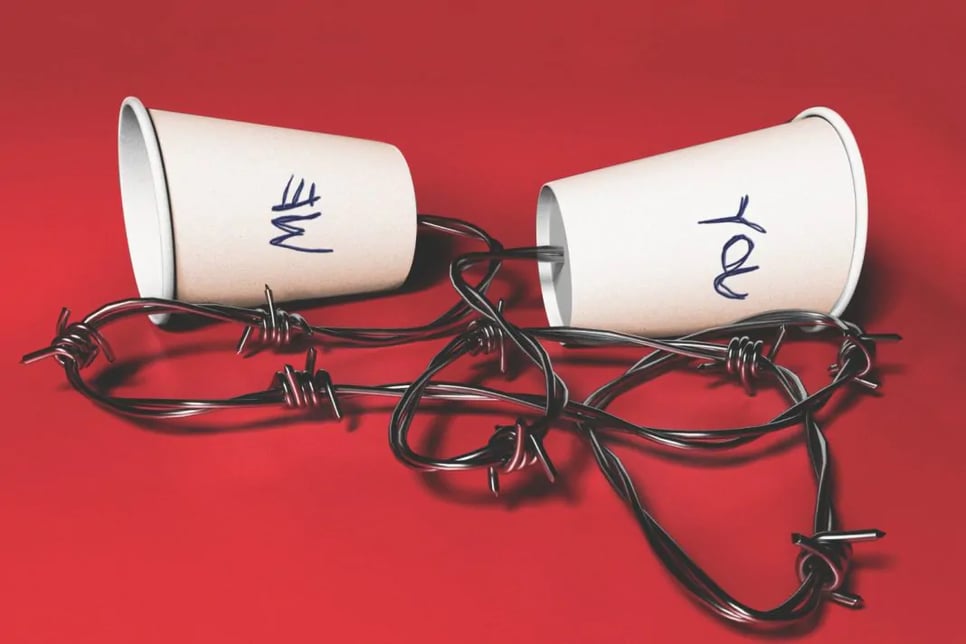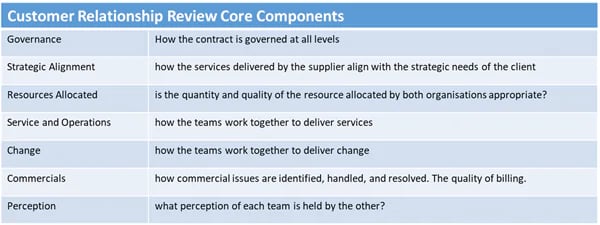“Coming together is a beginning. Keeping together is progress. Working together is success.”
This quote from the famous industrialist Henry Ford sums up the ingredients needed for enduring, successful supplier and customer relationships. However, how do customers and suppliers, particularly in these times of change and disruption, manage to maintain strong and relevant relationships?
What could future relationships look like?
Perhaps one where:
- Customers and suppliers have a clear idea of each other’s needs
- A joint action plan is proactively maintained
- Each party appreciates the impact of actions and behaviours on the other team
Let’s take a look at how we achieve that.
In our earlier article, “What Customers Want“, we identified that, now more than ever, customers, suppliers and service providers need to be totally aligned but that’s easier said than done, particularly when there are a thousand and one other priorities clogging up your inbox.
It may sound blindingly obvious but reaching out and talking to each other is a crucial first step. Particularly in a world that is changing fast, it’s likely that your customer and supplier needs will have changed too and a lack of dialogue risks falling out of step with what is most important to them. After all, how many people have you heard say “At first our relationship was great, but over time we drifted apart, we seemed to have different priorities and needs”.
Working together to understand how and where their requirements have changed, and how both parties can adjust the relationship to address changing priorities, is an important precursor to improving the direction of relationships. Just as in life, it often helps to bring in an independent arbiter to objectively identify the gap between customer demand and service provider supply – whether that be in terms of the services or products provided, service levels, commercial terms or simply flexibility to change and innovate in the relationship. As the famous saying goes “We were born in a time when if something was broken, we would fix it, not throw it away”.
Get some therapy
There are many people who are sceptical about therapy but, once they have tried it, discover it can be a powerful force for change. Supplier/customer relationships are no different. Independent counselling between customer organisations and service providers can provide all parties with a clearer insight into their working relationship. At Peru Consulting, we call this a “Customer Relationship Review”.

This therapy equivalent can create the catalyst to develop, strengthen and enhance dialogue between all parties in a supply chain and repair damaged relationships, ultimately helping to develop effective partnerships that deliver greater value, reduce costs and ensure better quality services. Crucially it can also provide all parties with the intelligence to proactively engage and create new commercial arrangements that really do lead to win-win outcomes.
As with any therapy, there are techniques that can be used to help the process. To that end, Peru has developed proven tools that can analyse supplier/customer relationships and identify issues. This includes structured interviews with key service, technical and commercial stakeholders from both service provider and customer teams, based upon seven core components:

Part of the review toolkit also includes an electronic ‘perception survey’, combined with a thorough analysis of documentation, including contracts, change control notes, governance minutes and service reports.
It’s good to talk
Once both parties’ views are established and verified, a detailed analysis is almost certain to highlight differences of opinion. A facilitated workshop would follow, where both parties are presented with the combined views, discuss the reasoning behind the differences of opinion and work together to develop and agree practical resolutions to the identified issues. This approach is at the very heart of collaborative problem solving where, classically, the biggest obstacle to progress is one or both parties not having a clear understanding of the others perspective and the rationale for that perspective. As Stephen Covey said in his famous book – The 7 Habits of Highly Effective People – “Seek first to understand, then to be understood”.

Working in this collaborative way, the plan is owned jointly and driven by all those who will deliver it, rather than being imposed from above or by a third party. It is essential that stakeholders from both parties embrace the process and are open and honest throughout. As independent facilitators, organisations like Peru can ensure the process not only aids the definition of the correct remedial activities, but also allows frustrations to be identified positively and constructively. This enables the relationship to continue and both sides to move forward as a partnership.
Making up is hard easy to do
A properly constructed customer relationship review should enable the following outcomes to be achieved:
- A thorough understanding of the issues and causes of the issues, with agreement to tackle these through a joint action plan
- An appreciation by both sides of the impact of actions and behaviours on the other team and the service received as perceived by the end user
- A ‘clearing of the air’ where both parties can express their frustrations and concerns within a safe environment.
- A true appreciation of what will make the relationship work for both parties, and what will destabilise it
- A stronger long-term relationship built on trust, understanding and clear targets and goals
- The basis for service providers to proactively engage their customers with improved service and commercial terms in return for an extension to their contract
A successful supplier/customer relationship is hugely valuable; it is built on trust and solid foundations, with clear contracts and realistic service level agreements. Whilst it will deliver measurable benefits to both parties and ensure consistent delivery of high-quality services, more importantly it will help to deliver the ultimate goal: a re-imagined relationship that works optimally for service providers and their customers alike. As the famous quote from John F. Kennedy goes “A rising tide lifts all the boats”.
Steve Watson is a Principal Consultant at Peru Consulting and specialises in all aspects of the commercial lifecycle from sourcing through to contract & supplier management optimisation. He has worked in both supplier and client roles with organisations including British Airways, BT, Walgreens Boots Alliance, Travis Perkins, and Musgrave.



